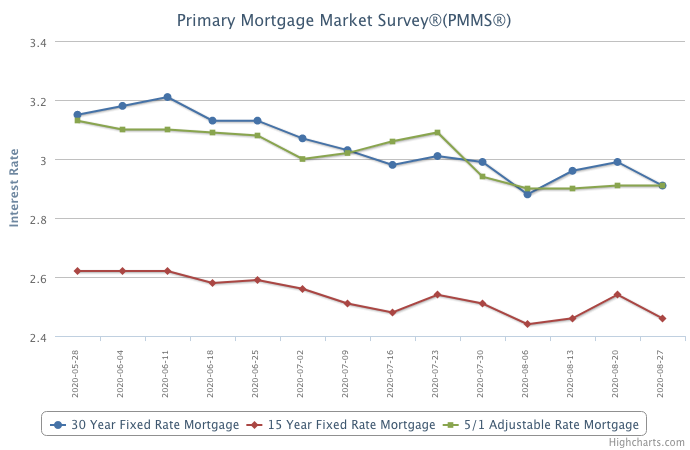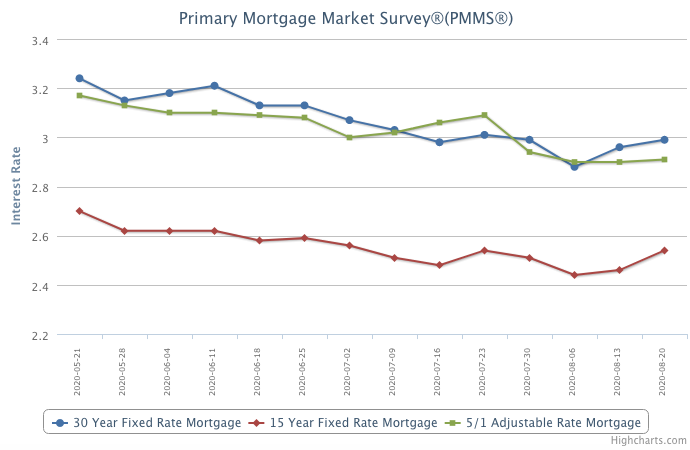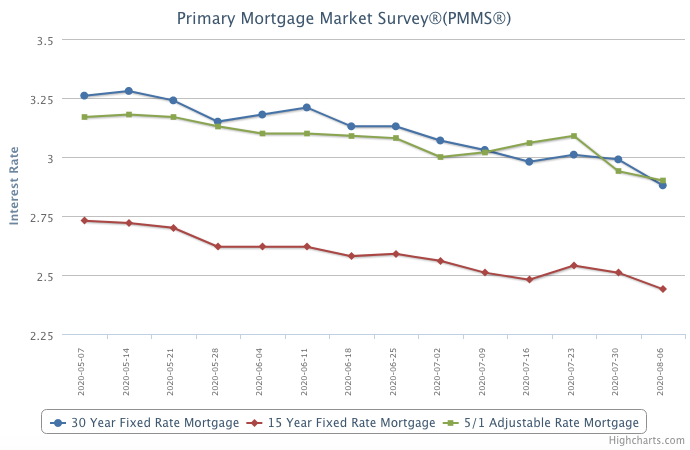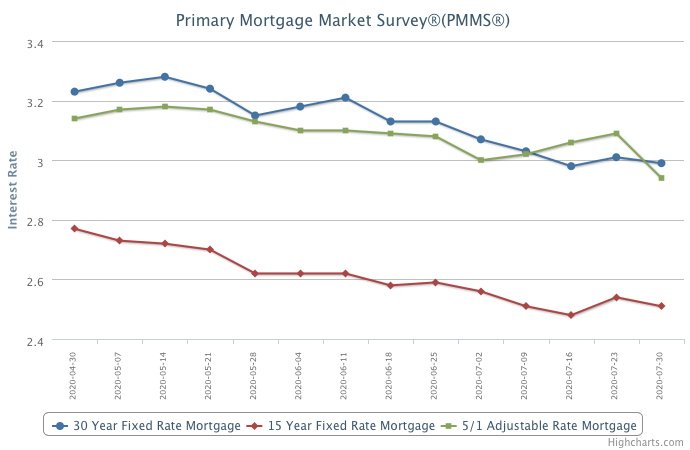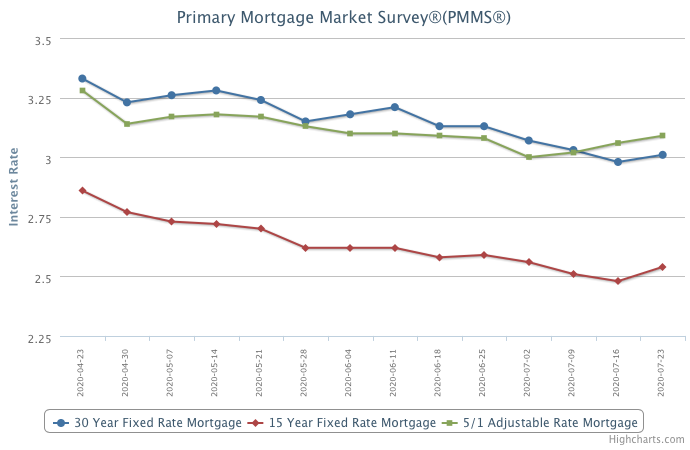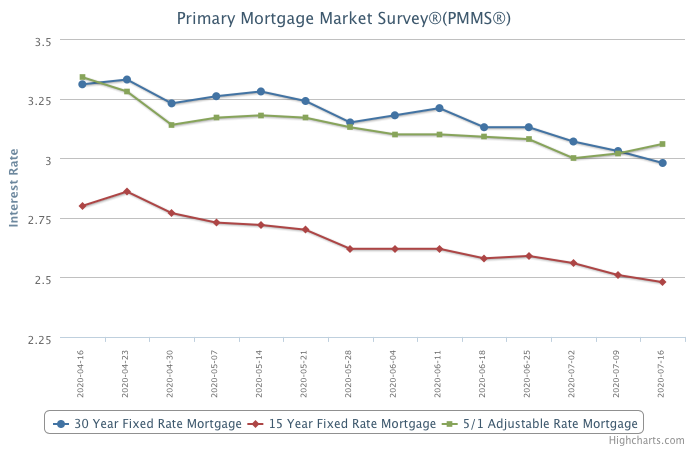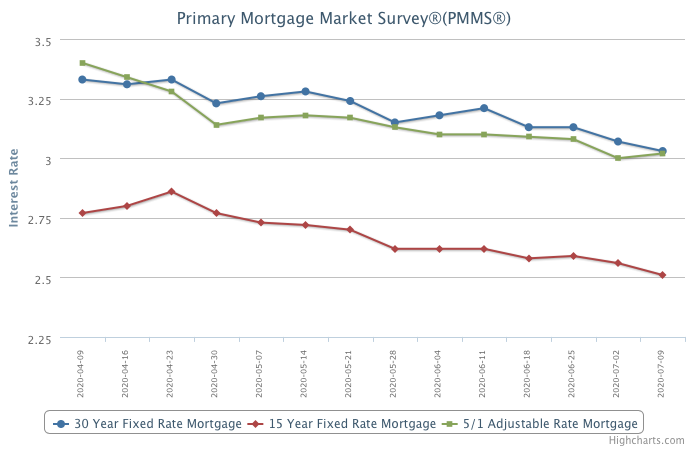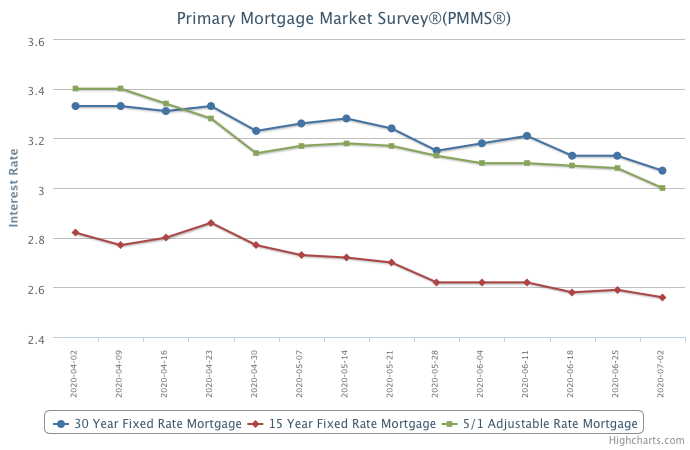
September 3, 2020
Mortgage rates have remained effectively flat or at near record lows for the last month. However, there are some interesting compositional shifts as the 10-year Treasury rate has increased modestly over the past month while mortgage spreads have declined. Spreads may decline even further but the rise in Treasury rates will make it difficult for mortgage rates to fall much more over the next few weeks.
Information provided by Freddie Mac.

